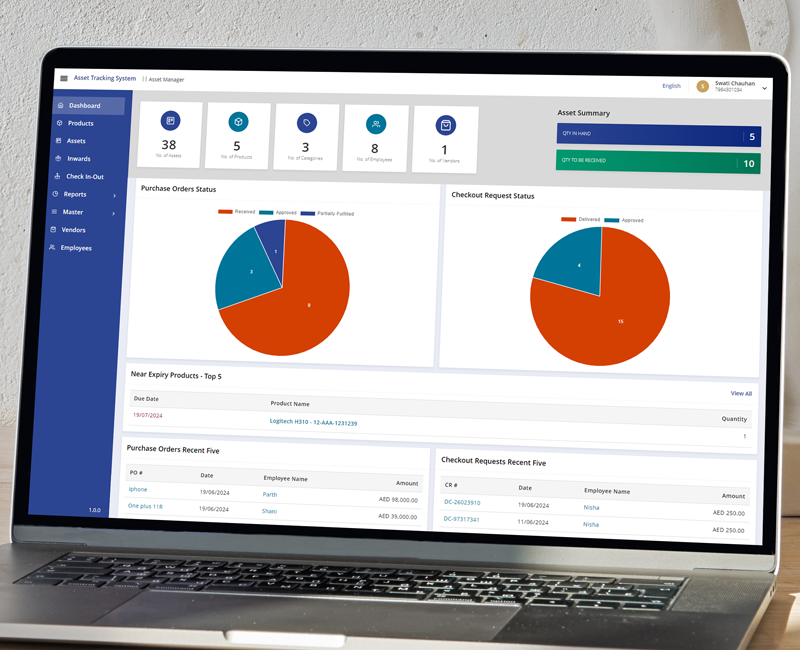Table of contents
- Here are the top 8 ways to improve Node.js Performance – Let’s find out!
- Server scaling with Node Js’ cluster module
- Application Testing is Vital
- Load balancing & reverse load balancing
- End-to-End Real-Time Monitoring
- Leveraging Websockets for improved communication.
- Opt for timeout requests in Node Js to boost performance
- Avoid using Node Js servers for delivering static assets!
- Incorporating SSL/TLS and HTTP/2
- Use Acronymous coding
- To wrap up!

Performance is critical in every web application. Faster speed in any web application increases the user experience while also providing seamless development, which is the ultimate goal of all businesses.
To make it possible and improve performance, Node.js is one of the top JavaScript-powered frameworks for your application development requirements.
It is a server-side framework that offers several modules that make it simpler to create excellent web applications with better Node.js performance. Some of the best benefits of Node Js for development are negative buffering and quick development.
Because of its one-of-a-kind features, Node.js framework has become a popular trend in backend programming. In reality, this is the key justification for the usage of Node Js by various major corporations, like eBay, Microsoft, Yahoo, Netflix, and LinkedIn.
Node.js is surely a powerful language to fulfill your unique development needs, but coping with the best practices of the Node.js framework can help you render one-of-a-kind solutions for your users.
In this blog, we will include the 8 best ways you can improve your Node.Js performance drastically. Keep reading!
Here are the top 8 ways to improve Node.js Performance – Let’s find out!

Server scaling with Node Js’ cluster module
Node.js is a single-threaded language that uses several threads to run asynchronous work in the background. The multicore system’s available cores cannot be fully utilized by Node. js-developed applications.
There may be times when a spike in traffic only places a load on one core, causing delays, disruptions, and downtime. In this situation, clustering excels as a benefit for scaling Node.js performance.
The Node.js server is clustered so that all of its child processes share the same server port and execute concurrently, each with its own memory loop. On a single computer, you can horizontally expand the Node.js server in this manner.
When there is heavy traffic, you can increase performance for a Node.js application because clustering simplifies scaling the server simply.
Application Testing is Vital
To get a better picture of your current Node application’s overall performance, you must measure and monitor its Node.Js performance.
You may easily improve your web application for optimal performance if you are mindful of the node.js performance of your application.
The following are a few crucial factors you should take into account while building highly scalable web apps end ensure hassle-free browsing
Evaluation of the application’s load through load testing, which gauges utilization and response times.
- Scalability testing to find and fix errors and problems that prevent the scalability of your web application.
- Endurance testing can assist you in resolving issues connected to the amount of demand that web applications can withstand.
To ensure error-free final results, hire the best-in-class Node.Js development company.
Load balancing & reverse load balancing
Making applications that are efficient and can manage a huge amount of incoming connections is a frequent problem. One common method of balancing the connections is to disperse the traffic through load balancing.
Fortunately, the Node.js framework helps you in replicating an app instance to support multiple connections. Use a single multicore server or a few servers to accomplish it.
You can expand the Node.js application on a multicore server by generating new processes called workers that all operate concurrently and link to a sole master process with a single server port. As a result, it functions as one enormous multithreaded Node.js server.
Since the single-cluster design has drawbacks, when you hire Node.js developers, make sure they prepare to switch from a single-server structure to a multi-server architecture with reverse proxy load balancing.
End-to-End Real-Time Monitoring

Administrators can manage and keep an eye on the system for any disruptions or issues that occur in web applications in real time with the help of the third-party application Real-Time Monitoring. This enables when you hire nodejs developers to react quickly to any issues or bugs that may appear.
In Node JS, you can utilize Newrelic, Stackify, Ruxit, LogicMonitor, and Monitis to capture traces and activity quickly, simply, and consistently. With the help of this monitoring, you may examine and learn more about certain problems, such as how well node.js function when used by numerous users.
Leveraging Websockets for improved communication.
With WebSocket, an enhanced protocol, files are sent to clients without their request using a “push and pull” form of communication. The WebSocket keeps the channel open between the client and the server, reducing delay and overhead when transmitting data, storing, establishing a connection, or performing other operations.
In Node.js applications, the use of Web Socket results in major, observable changes. This means that instead of 8 KB for each frame, the amount of data that is transmitted between the client and the server is reduced to 2 bytes.
Establishing trust among users has become a top priority for businesses because of quick communication and openness. WebSockets were developed for real-time communication within real-time tracking systems because of this.
Opt for timeout requests in Node Js to boost performance
Using timeout requests is one of the best ways to improve Node.js’ performance. By setting a timeout on a request, you can ensure that the request will not take too long to complete and that the server will not be blocked by a slow or unresponsive client. It helps you in improving the overall Node.js performance of your application and even prevents servers from becoming overloaded.
Here are some tips for using timeout requests in Node.js:
- Set a reasonable timeout value. The timeout value should be long enough to allow for a reasonable amount of time for the request to complete, but not so long that it will cause node.js performance problems.
- Use a consistent timeout value for all requests. This will help to ensure that your application is consistent and predictable.
- Test your timeout values with different types of requests to determine the optimal timeout value for your application.
- Monitor your application’s performance as it will help you to identify any potential problems with timeouts.
Avoid using Node Js servers for delivering static assets!
Avoid using your Node.js servers to deliver static assets from your application, such as JavaScript, CSS, or picture files, to achieve the highest level of node.js performance.
Serving resources from the main app consumes significant resources and delays crucial business computations because Node.js wasn’t created with this use case in mind.
Offload delivering static files to a web server like Nginx so that it can carry out optimizations that are unnecessary for Node.js framework. This test demonstrates that Nginx is almost twice as quick as Node.js in serving static assets.
Another alternative for serving static files is to employ a CDN proxy, such as Amazon CloudFront, to cache your dynamic content and offer it as near to the end users as possible. This frees up the Node.js servers to handle dynamic requests only.
Incorporating SSL/TLS and HTTP/2
SSL/TLS is being used by an increasing number of websites to secure all user communication.
You decide if and when to make this transition, but if you do, NGINX will assist you in two ways:
- Once NGINX has been configured to act as a reverse proxy, you can close an SSL/TLS connection to the client in NGINX. With the NGINX reverse proxy server, the Node.js server exchanges request and content that is not encrypted.
- Early results suggest that the speed cost associated with SSL/TLS use may be partially or entirely offset by using HTTP/2, the next version of the HTTP protocol. Since HTTP/2 and SSL/TLS can be terminated simultaneously using NGINX, no changes are needed in the Node Js app server.
Use Acronymous coding
Node.js framework significantly relies on asynchronous coding to maintain a non-blocking operating flow. Other processing can go on even before the first transmission is finished because of asynchronous I/O. Your website could potentially be locked by synchronized code. It makes use of blocking operations, which might hinder the node.js performance of your main thread and your webpage.
By using queues to keep track of your workflow, asynchronous programming enables you to add more tasks and callbacks without interrupting your main thread. You might try to use asynchronous methods, but there’s a chance your website will still make some blocking calls.
This is quite frequent when utilizing third-party modules. You should keep a watch on the outside libraries you use and take safety measures to prevent them.
To wrap up!
The node. js performance of an application has always been a top concern for both users and clients, and this is what distinguishes an app in a crowded market. This blog post discusses some of the most essential performance enhancements you can make to your Node.js applications.
Since Node Js has an easier development process and offers flexibility, privacy, and dependability, it is the ideal technology for creating web applications.
So, if you seek to optimize your Node Js-based product, get in touch with the top Node Js development company that provides the most important development and optimization services.
At Sufalam Technologies, we have a team of committed Nodejs developers and designers who can assist you in creating or improving Node.js applications.













